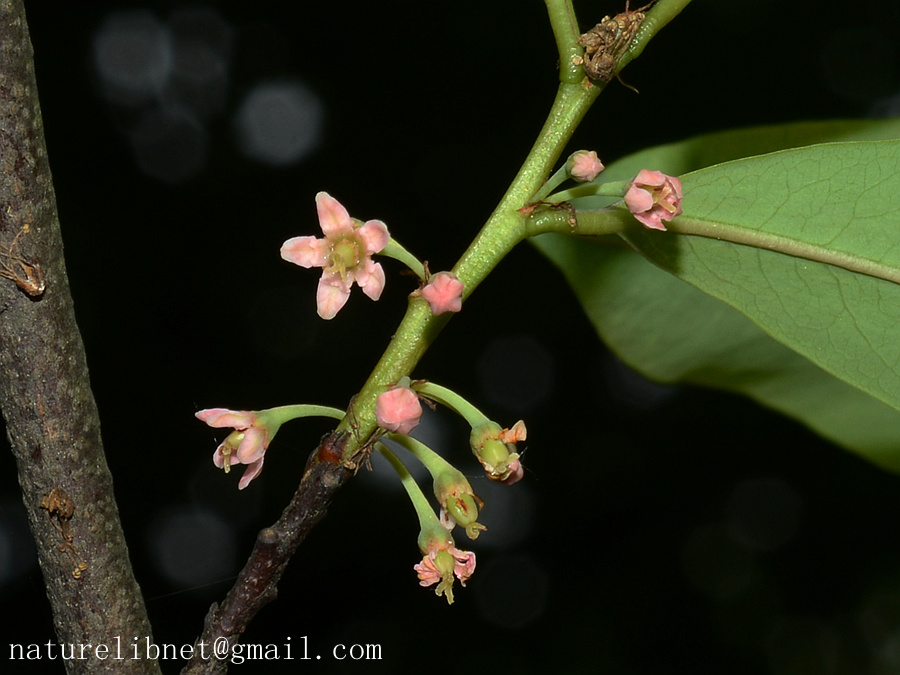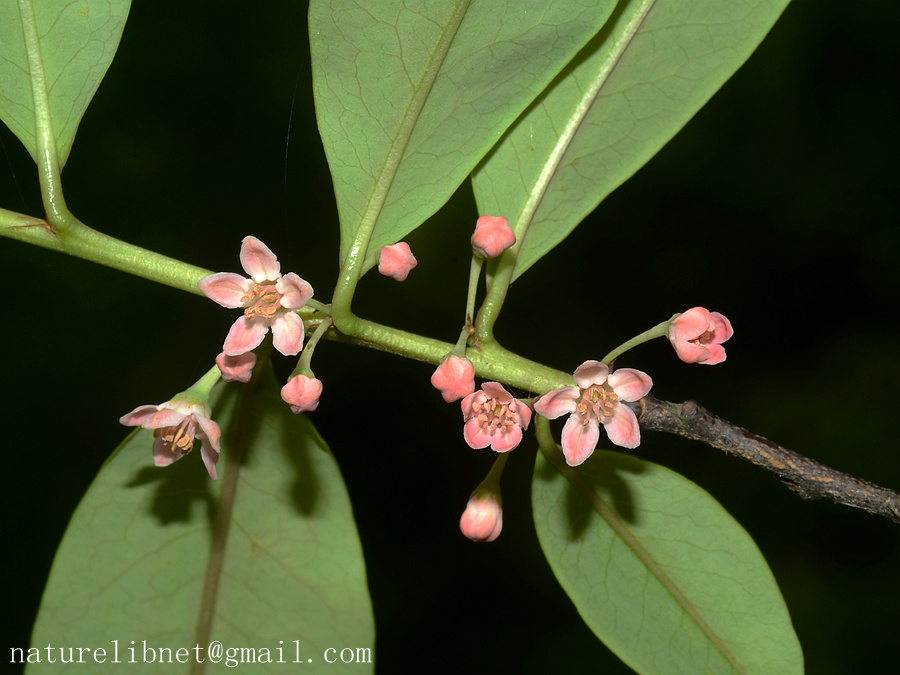东方古柯 Erythroxylum sinense
- Scientific Name: Erythroxylum sinense Y.C.Wu
- Ref: Bot. Jahrb. Syst. 71:189. 1940
- Synonym: Erythroxylum kunthianum Kurz (1872), not A. St.-Hil. (1829); Sethia kunthiana Wall.
- Chinese Common Name: 东方古柯 dōngfāng gǔkē
- Japanese Common Name: シナコカノキ [シナコカの木] shinakokanoki
- Family: Erythroxylaceae
- Genus: Erythroxylum
- Distribution: Mountainous areas, trailsides, valley forests; 200-2200 m. Fujian, Guangdong, Guangxi, Guizhou, Hainan, Hunan, Jiangxi, Yunnan, Zhejiang [NE India, N Myanmar, Vietnam].
- Photo: 05/02/2019, Hangzhou Botanical Garden, Zhejiang
Shrubs or small trees, 1-6 m tall. Branches glabrous. Stipules triangular to lanceolate, 1-3 mm or longer, margin entire, fimbriate, or dissected. Leaves alternate, simple; petioles 3-8 mm; leaf blade narrowly elliptic, oblanceolate, or obovate, 2-14 × 1-4 cm, papery, costa slender, base narrowly cuneate, margin entire, apex caudate, shortly acuminate, acute, or obtuse. Flowers axillary, solitary or 2-7-fascicled on a very short peduncle. Pedicel 4-6 mm, to 9 mm in fruit. Sepals 5, basally connate, lobes 1-1.5 mm. Petals pink, ovate-oblong, 3-6 mm, with 2 ligules on inner face at base. Stamens 10; filament with papillary trichomes, bases connate into a tube. Ovary oblong, 3-locular, with 1 fertile locule; styles distinct. Drupe oblong, 6-17 × 3-6 mm, slightly curved, with 3 longitudinal ribs. Fl. Aug-May, fr. May-Oct. (Flora of China)

2019.05.02@HZBG
